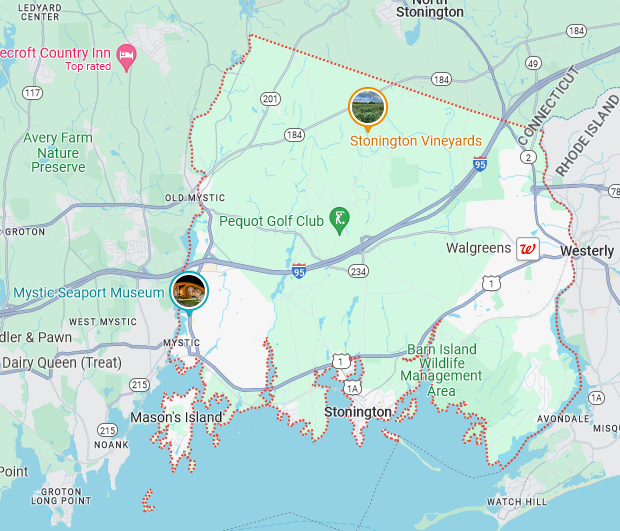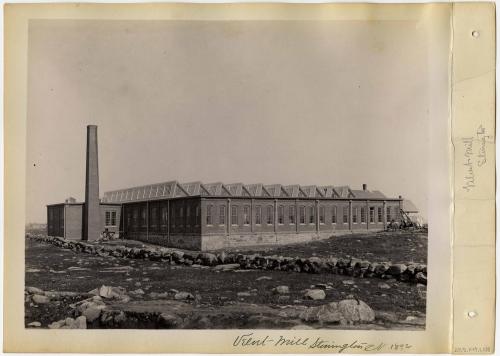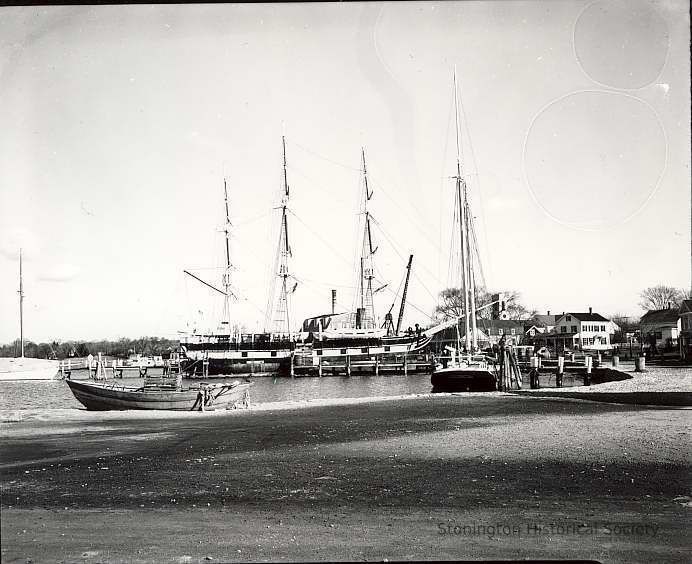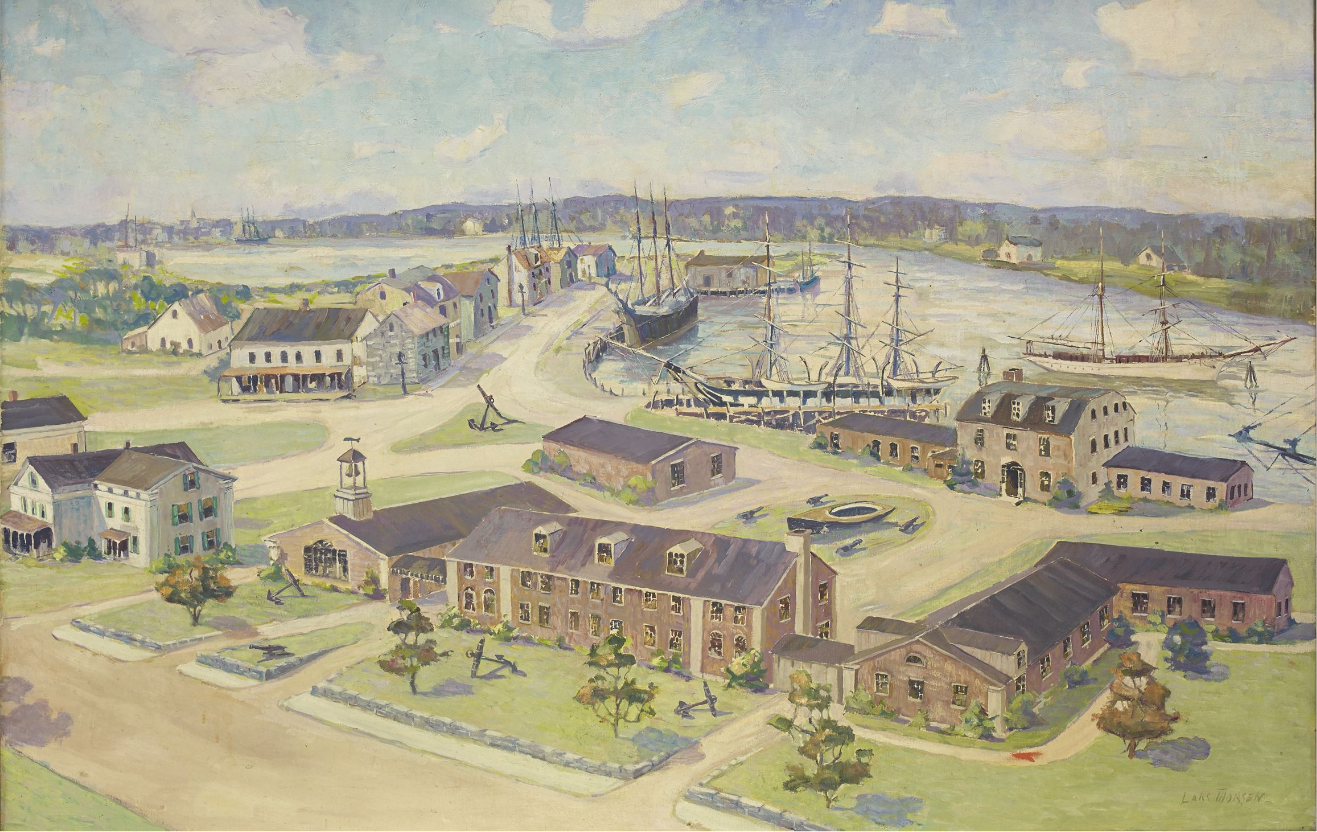Sheila Adams & Shauna Major
West Vine Street School, Stonington Public Schools
TEACHER'S SNAPSHOT
Subjects:
Business & Industry, Geography
Course Topics/Big Ideas:
Cultural Communities in Connecticut Present and Past, Innovation, Industry, and Economic Growth, Location, Place, and Movement, Regional Interdependence
Town:
Mystic, Statewide, Stonington
Lesson Plan Notes
This is an inquiry-based lesson designed to drive students to explore the history and importance of their own hometown and what makes it special. This can be applicable to any town/city and any historical time period. We recommend taking at least one field trip as part of your study.
Standards:
4.Geo.8.a. Explain how human settlement and movement relates to the availability of natural resources in a region (e.g., fisheries, mining, arable land, access to water for transportation)
4.His.9.a. Summarize how different kinds of sources can be used to understand the settlement and resettlement of individuals and groups (e.g., census records, diary entries, oral histories, monuments, secondary sources).
4.Civ.14.a. Illustrate historical and contemporary examples of individuals and groups effecting change in a region (e.g., civil rights, clean air policy, conservation, determination of National Park status, healthcare access, water and land rights).
ESSENTIAL QUESTION
SUPPORTING QUESTIONS
- When you think of a town or city, what comes to mind?
- What kinds of things can you find in a town or city?
- What has to be considered when a town or city is created?
- Who makes decisions about how towns develop, grow, or change?
- What makes one town or city different from another town or city?
ACTIVITY
- Assign students into small groups of 3-4 to “turn and talk” about the following questions:
- When you think of a town or city, what comes to mind?
- What kinds of things can you find in a town or city?
- What has to be considered when a town or city is created?
- Who makes decisions about how towns develop, grow, or change?
- What makes one town or city different from another town or city?
- Allow groups time to talk about questions and then share their responses as a whole group.
- Share the following statement with the class: “[Insert your town’s name] history makes it a special town in Connecticut.”
- Have students generate questions in their groups that will help them support this statement, using the QFocus strategy shown above.
- Record ALL questions as students share out. Ideally, have these visible on an interactive whiteboard/chart paper so students can see what’s already been asked.
- If you are doing a field trip, do this section of the lesson first.
- This is also where you can introduce images (historic and/or modern) from around your town.
- After the trip and/or image analysis, ask students to add additional questions and discuss any that were already addressed.
- Have students choose 2 or 3 questions from the list that they would like to research further. The questions must be relevant to the essential question of the lesson.
- Create new groups based upon students’ interests and their selected research questions (2-4 students per group).
- Students will research their questions with their group using some of the websites suggested below, as well as other sources.
OPPORTUNITIES FOR ASSESSMENT
Students will create a RACE response (literary response) that answers the essential question. This written response should include a complete answer with evidence to explain why your town/city’s history makes it special in Connecticut.
RACE RESPONSE:
Step 1: Restate the question
Step 2: Answer the question
Step 3 Cite evidence (2 pieces of evidence to support your answer)
Step 4: Explain how the evidence supports the answer
OR
Students will create a visual representation of their learning:
- Construct a diorama
- Create a slideshow
- Write and perform a play or a song
- Interview an historical ‘person’
- Make a board game
- Compile a “History in a Bag” collection of items representing your town
RESOURCE TOOL KIT
Sample slides and lesson materials:
Our Town’s Claim to Fame lesson slides
Developed by Sheila Adams and Shauna Major, 2024.
Types of Questions and QFocus Protocol
Adapted from the methodology of the Right Question Institute by Sheila Adams and Shauna Major, 2024.
Find more at the Right Question Institute website.
Examples of sources used to teach about Stonington. See links to online primary source repositories listed below in the “Additional Resources” section to find examples from your own Connecticut town/city.

Google Map image of the town of Stonington. Courtesy Google Maps.
Used during our discussion about considerations when establishing a town. For Stonington, for example, one would be that it is bound on three sides by water: Pawcatuck River, Mystic River, and Long Island Sound.
Guiding Questions: What do you notice? What are the boundaries of our town? Why is that important?

Velvet Mill, Stonington, CT, 1892. Courtesy Connecticut Museum of Culture and History.
This photo illustrates the history of fabric mills in our town and the importance of water to mill towns for power and transport. On their field trip to Mystic Seaport, students saw the Rossi Mill.
Guiding Question: Why were there so many mills in Stonington?

Charles W. Morgan at Mystic Seaport. Courtesy Historic Stonington.
Students examine the photo prior to the field trip.
Guiding Questions: What does this photo show? How does this photo relate to our town? What industry do you think this photo relates to?

Proposed development of “Old Port of Mystic” at Mystic Seaport Museum. Courtesy Mystic Seaport Museum.
While visiting the Mystic Seaport on the field trip, students will see a scale model of the actual port of Mystic.
Guiding Questions: What types of important businesses do you think you will find in Mystic Seaport?
ADDITIONAL RESOURCES
Places to GO
Mashantucket Pequot Museum and Research Center
Connecticut Museum of History and Culture
Your town’s historical society or any historical museum/site in your area
Things To DO
Visit a local museum, historical society, or historical site.
Find your town/city on a map. Locate other significant towns and cities. Discuss why these towns were settled in those locations.
Websites to VISIT
Articles to READ
Find articles about the history of your own Connecticut town at ConnecticutHistory.org.



